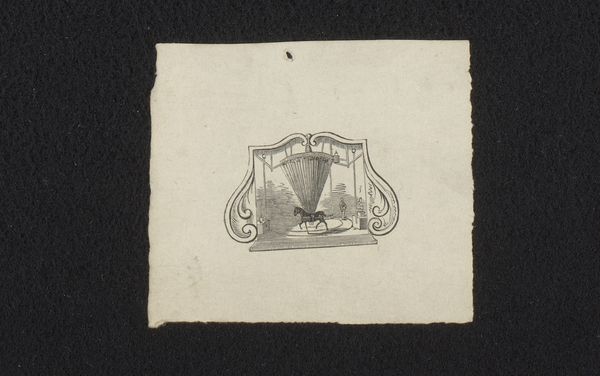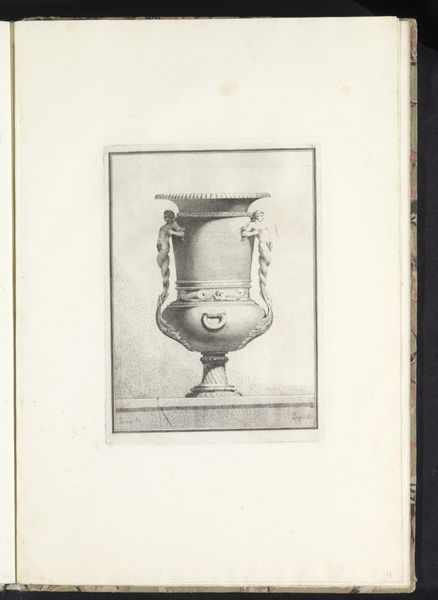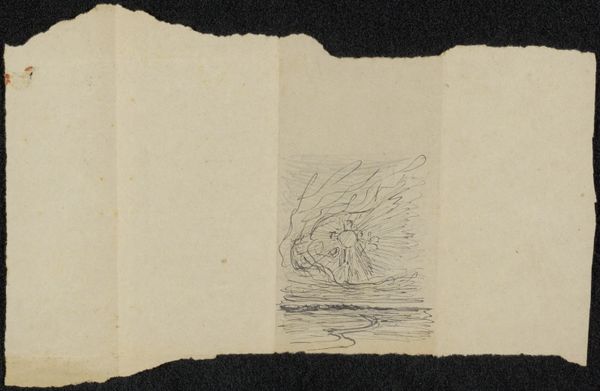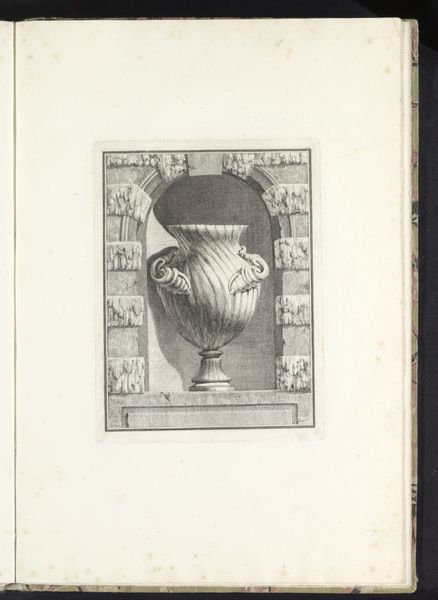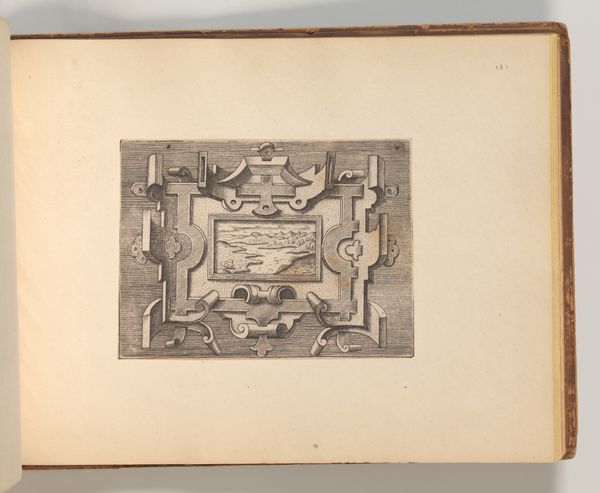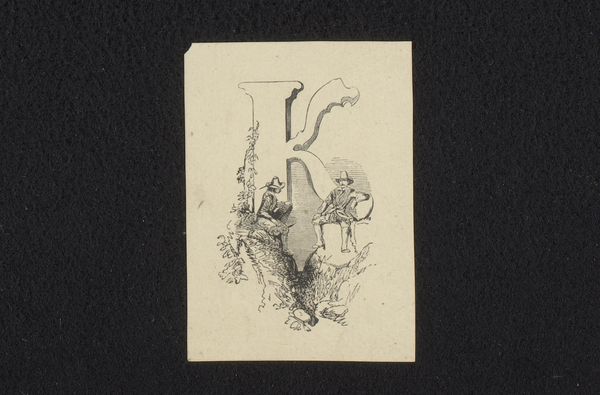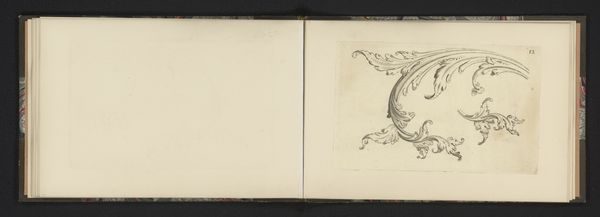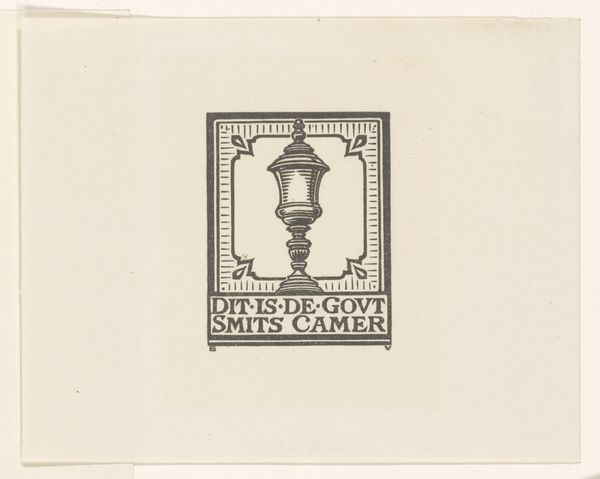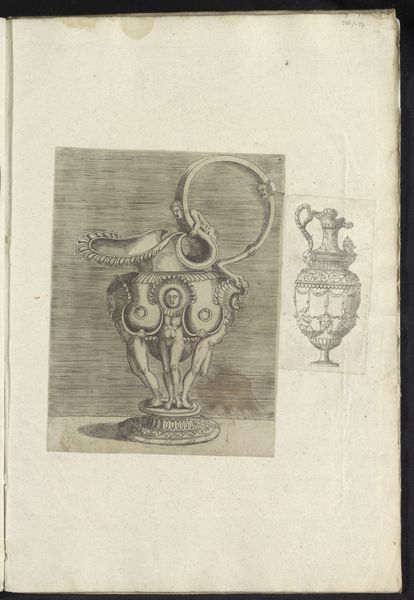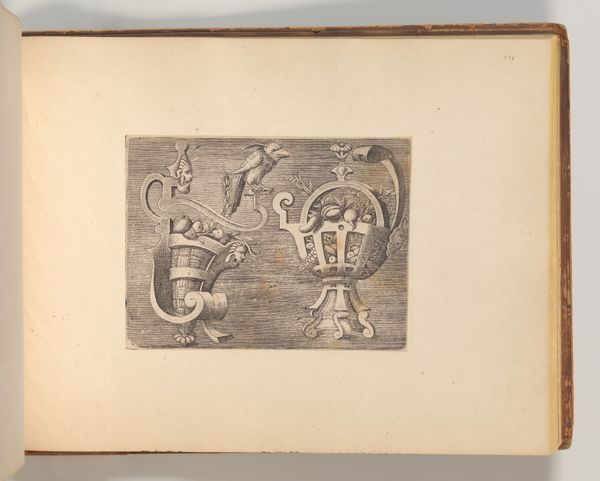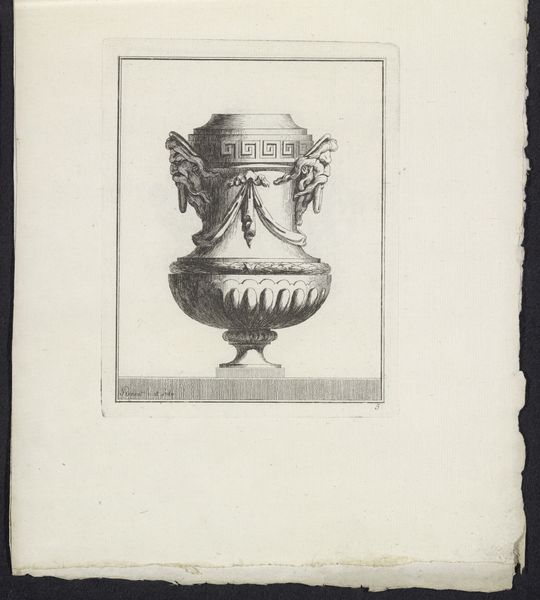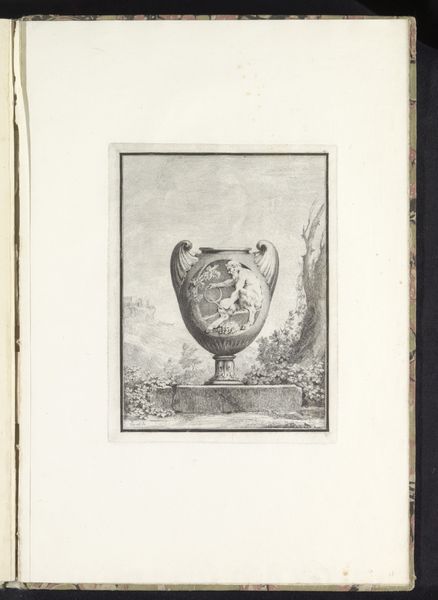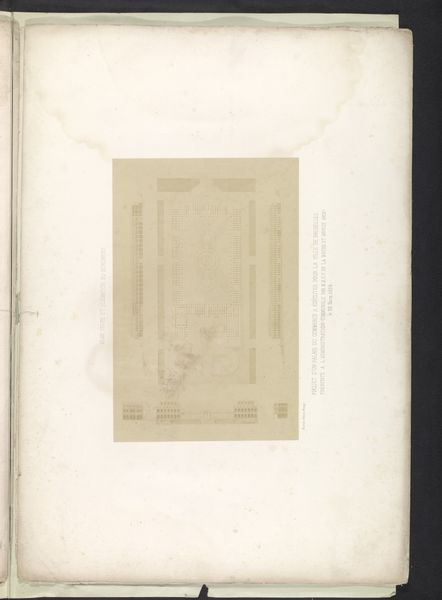
Dimensions: height 81 mm, width 80 mm
Copyright: Rijks Museum: Open Domain
This small drawing of a wilting flower and an hourglass was made by Isaac Weissenbruch, a Dutch artist, in the late 19th century. Weissenbruch was associated with the Hague School, a group of artists who sought to capture the everyday life of the Netherlands with naturalism and sensitivity. At first glance, this looks like a simple still life. Yet, the image is filled with cultural and social meanings. The hourglass and the fading bloom are symbols that remind us of the transience of life, and the inevitability of decline. These symbols were common during the late 19th century. The Netherlands was undergoing rapid industrialization and urbanization, which disrupted traditional ways of life. Artists like Weissenbruch turned to naturalism as a way to capture the fleeting beauty of the world around them. To truly understand this drawing, one must consider the institutional context in which it was made. Dutch museums and art academies played a vital role in shaping artistic production. They promoted certain styles and themes, and the drawing may reflect these influences. By researching the cultural and institutional history of the late 19th century, we can gain a deeper understanding of the historical context of the artwork.
Comments
No comments
Be the first to comment and join the conversation on the ultimate creative platform.
